
I have a great passion for discussing space-related subjects, and I am particularly interested in exploring the fascinating topic of gas giants. Specifically, I am eager to delve into the composition and structure of their atmospheres, as well as the abundance and ratios of different gases present within them. To provide a more comprehensive understanding, I will draw examples from our own solar system, as they serve as excellent illustrations.
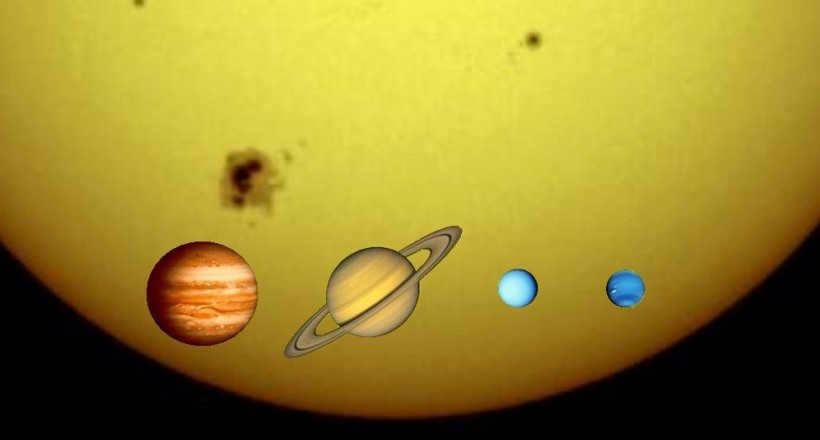
Gases Constituting the Atmospheres of Gas Giant Planets
The primary constituent of the atmospheres of gas giant planets is hydrogen, although helium and trace amounts of other gases are also present.
Within our solar system, there are a total of four gas giants that contain hydrogen in their composition. These planets include:
Jupiter’s atmosphere
Jupiter, the largest and nearest gas giant to the Sun, is composed of 87% hydrogen and 13% helium, along with traces of oxygen, nitrogen, and sulfur. The immense pressure on the planet causes the hydrogen to become metallic, extending tens of thousands of kilometers below its surface. This transformation into semi-liquid metallic hydrogen generates a powerful magnetic field surrounding the planet.
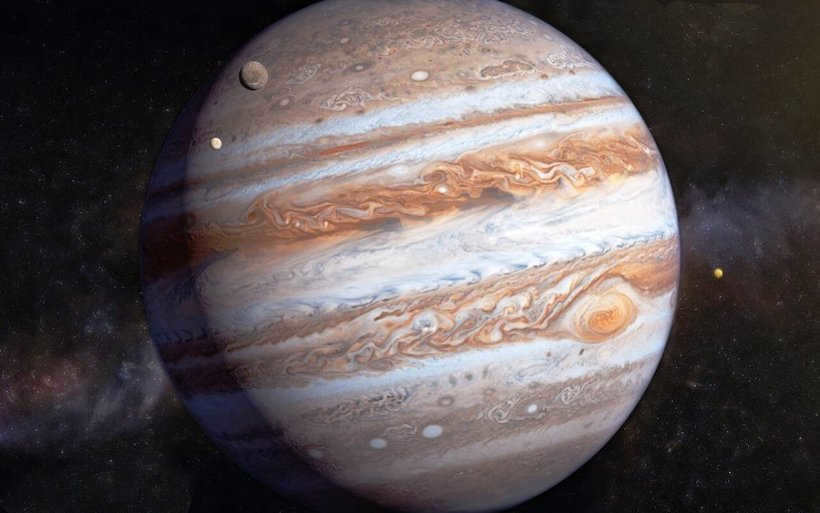
About the Composition of Saturn’s Atmosphere
The atmosphere of Saturn is primarily composed of hydrogen, making up about 75 percent, and helium, making up about 25 percent. In addition to these gases, there are also trace amounts of ammonia, ethane, and methane. Saturn’s atmosphere also contains a large metallic layer of hydrogen, which generates a powerful magnetic field. The upper part of the atmosphere is characterized by the presence of ammonia clouds, while the lower part contains either ammonium hydrosulfide or water.
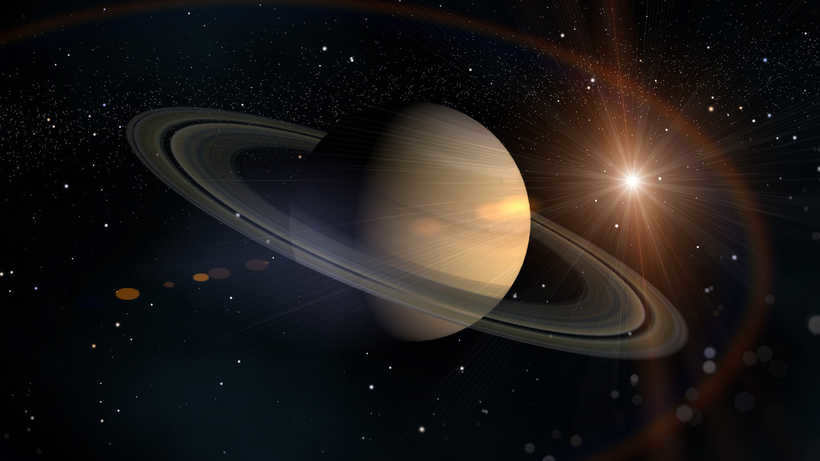
Composition of the atmosphere of Uranus
The makeup of Uranus’ atmosphere is primarily composed of hydrogen and helium. At deeper levels, significant quantities of ammonia, water, and methane can be found. Additionally, the atmosphere transitions seamlessly into the icy mantle without any distinct boundary. Various cloud formations exist within the atmosphere, including methane clouds near the surface, hydrogen sulfide and ammonia clouds in the middle layer, and ammonium hydrosulfide and ice crystal water clouds in the lower depths.
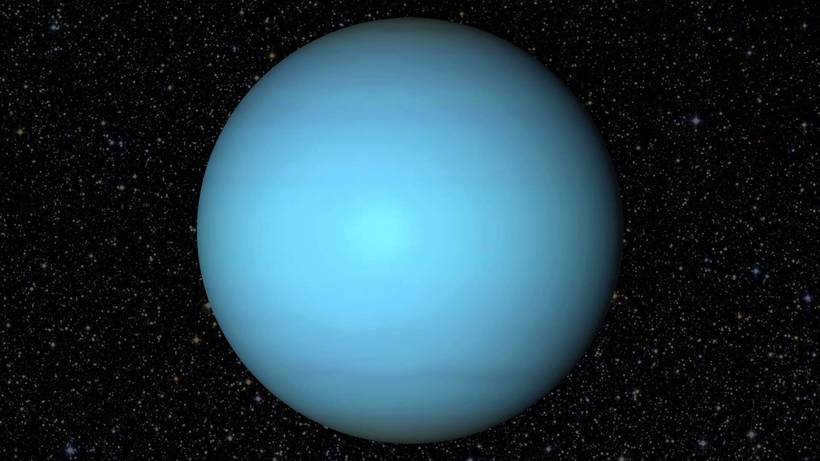
Composition of Neptune’s Atmosphere
The atmosphere of Neptune, a giant planet, consists primarily of hydrogen (about 80%) and helium (about 19%), with traces of methane. As one delves deeper into Neptune’s atmosphere, it transitions into a dense, hot mantle.
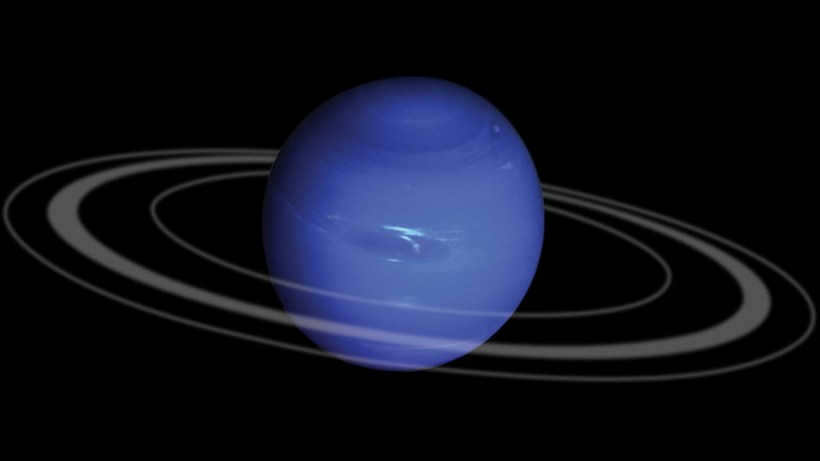
When subjected to pressure, the layers of these giant planets give rise to the formation of clouds composed of ammonia and hydrogen sulfide. In the deeper layers, clouds consisting of ammonium sulfide, ammonia, and hydrogen sulfide can be found.
As an avid enthusiast of all things related to astronomy and space, I find it impossible to ignore such an intriguing question. Allow me to provide a brief characterization of these colossal celestial bodies and share some fascinating facts about them.
What is the primary gas in the atmospheres of gas giants?
According to the scientific definition, gas giants are planets formed from gases, with hydrogen making up the largest portion. In our solar system, there are four gas giants: Jupiter, Neptune, Saturn, and Uranus. These planets possess several distinctive features according to international classification:
- They possess stable magnetic fields.
- They are located far from the Sun.
- They have a system of satellites.
- Some have rings.
Furthermore, gas giants are considered outer planets, meaning they are situated beyond the asteroid belt. They are relatively cold planets, each with its own unique characteristics despite certain similarities.
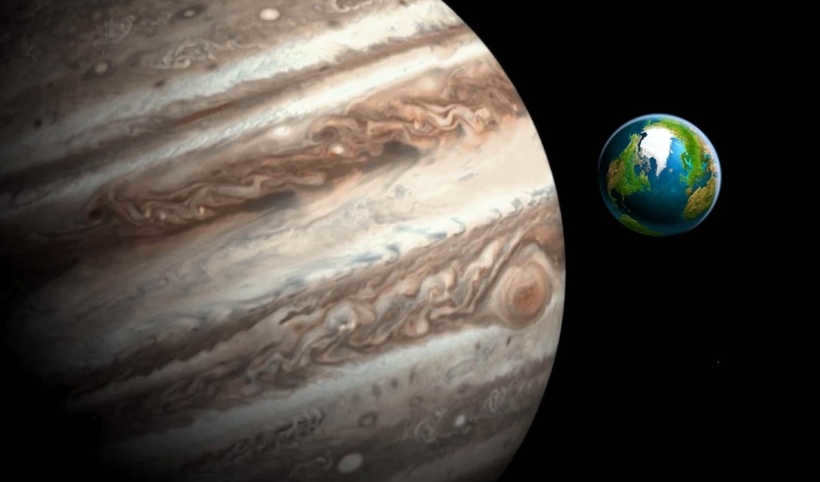
Curious information about giant gas planets
Each of the gas planets presented here has undefined boundaries between its atmosphere and other layers. Furthermore, the existence of a solid core is uncertain, as it is likely composed of liquid gas resulting from extreme pressure. These planets rotate much more rapidly than those with a solid surface, with slower speeds at the poles compared to the equator. Jupiter is not only the largest among its fellow gas planets, but also the largest in the entire solar system, although it is still smaller than the Sun. Saturn follows closely behind, and is regarded as the most enigmatic object due to its rings. The origin of these rings is a subject of intense debate, but it is known that they consist of ice particles and various-sized rocks.
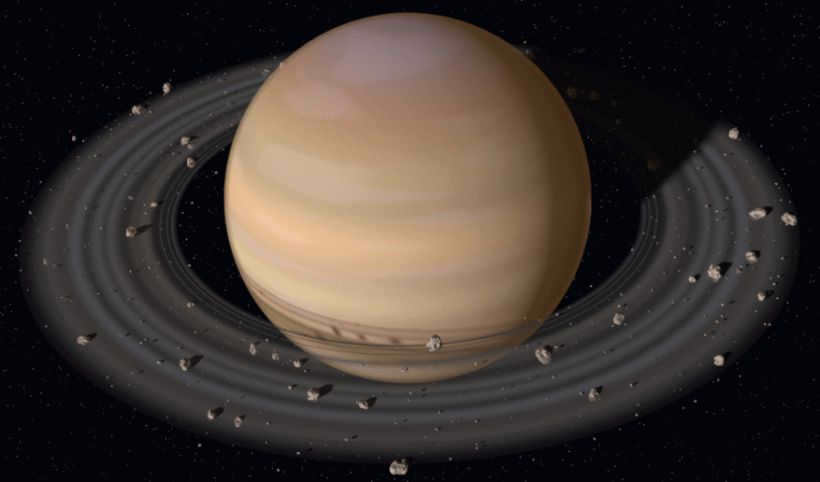
Uranus is known for having the most frigid atmosphere, with temperatures dropping as low as -250°C. Perhaps its most distinctive feature is its peculiar tilt, which gives it the appearance of being “lying on its side”. On the other hand, Neptune boasts the strongest winds in the entire solar system, reaching speeds of up to 2500 km/h. Additionally, its gravitational pull is nearly equivalent to that of Earth.
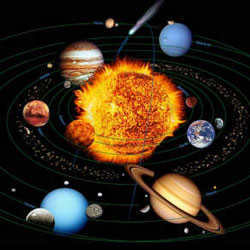
Science
While we have a good understanding of the composition of our own planet, Earth, it’s important to remember that the planets in our solar system are incredibly diverse. In this article, we will explore the unique make-up of the largest planets in our system.
Jupiter
Jupiter, the largest planet in our solar system, is predominantly composed of hydrogen and helium. Unlike other planets, such as Earth, Jupiter does not have a solid crust. Instead, its surface consists of gaseous and liquid substances, making it difficult to distinguish the boundary between the planet’s atmosphere and its body.
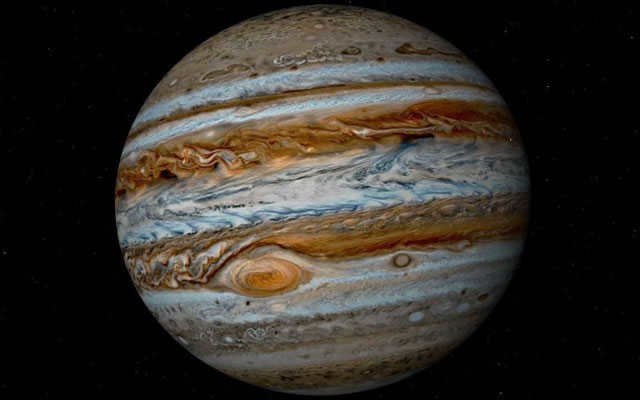
Below the layer of atmosphere, approximately 1 kilometer thick, lies a 20 thousand kilometer deep layer of liquid hydrogen. Scientists have discovered that even at this depth, there exists a layer of liquid metallic hydrogen under a pressure of 3 million bar. This is an incredibly high pressure.
Researchers believe that the planet’s core is made up of an iron-nickel alloy and rock, reaching temperatures of 20000 degrees Celsius.
Similar to Jupiter, Saturn is predominantly made up of hydrogen and helium and has a remarkably low density. In fact, Saturn’s density is approximately two-thirds that of water.
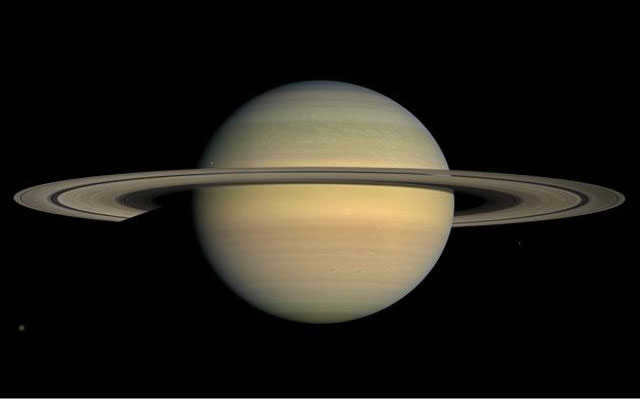
The composition of Saturn’s atmosphere is primarily made up of several layers, starting with ammonia, followed by ammoniacal hydrogen sulfide, and topped off with ice. Beneath these layers lies the Saturnian surface, which is composed of liquid hydrogen, similar to Jupiter. Deeper down, there is a layer of liquid metallic hydrogen.
Scientists believe that Saturn’s layer of liquid hydrogen is denser than Jupiter’s, while the layer of liquid metallic hydrogen is less dense. The core of Saturn is believed to be made up of a combination of rock and ice.
Uranus
Uranus is predominantly composed of helium and hydrogen, similar to Saturn and Jupiter, giving it a gaseous composition. The planet’s atmospheric composition primarily consists of hydrogen, along with significant amounts of helium and methane.
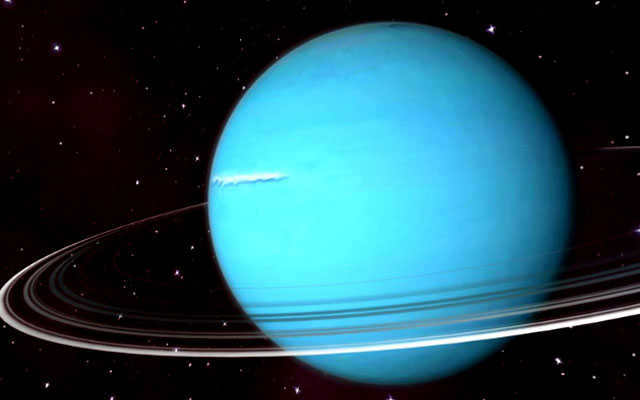
The core of the planet is composed of a mixture of rock and ice, while the outer layer is primarily made up of ice containing water, ammonia, and methane.
Neptune
The atmosphere of Neptune is primarily composed of hydrogen, methane, and helium, and is similar in composition to that of Uranus. Below the atmosphere is a liquid layer of hydrogen, which also contains helium and methane. The deeper layers consist of liquid hydrogen, oxygen, and nitrogen.
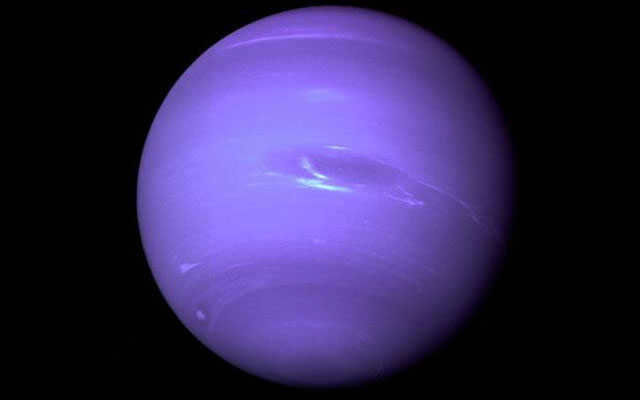
It is believed that the core of the planet is made up of a combination of rock and ice. Neptune has the largest average density among all the gas giants in the solar system, as well as the largest proportion of its core to its total size.
While the terms “Giant Planet” and “Gas Giant” are often used interchangeably, the former is more inclusive. For instance, ice giants are considered giant planets but not gas giants. The key distinction between these categories lies in their chemical composition: gas giants have a mass fraction of hydrogen and helium exceeding 90%, whereas ice giants have a fraction of 15-20%. Additionally, gas giants are heavier than ice giants[1].
Gas giants are often referred to as “unsuccessful stars” because they have the greatest mass among planets and a similar chemical makeup. However, this is mostly an overstatement since the generally accepted threshold between planets and brown dwarfs is 13 MJ[2].
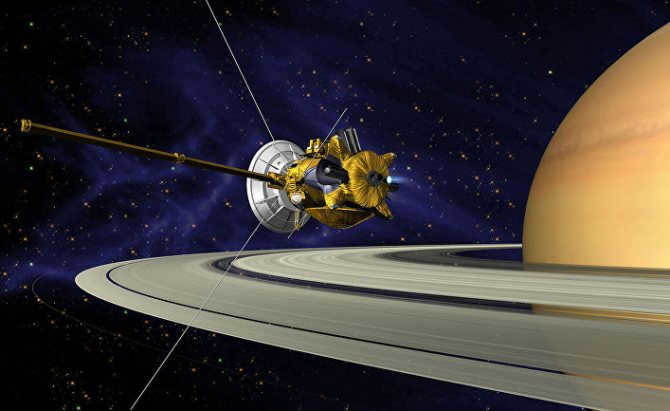
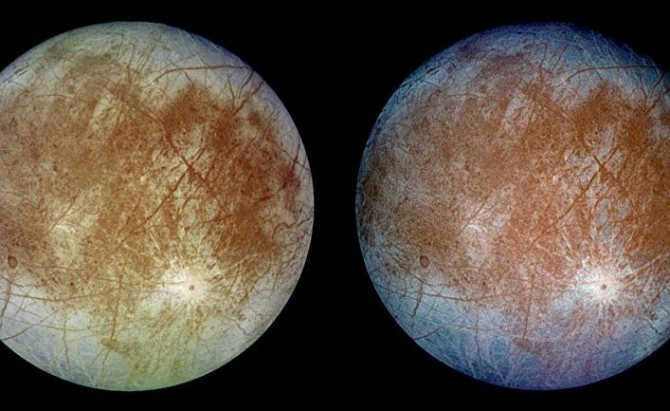
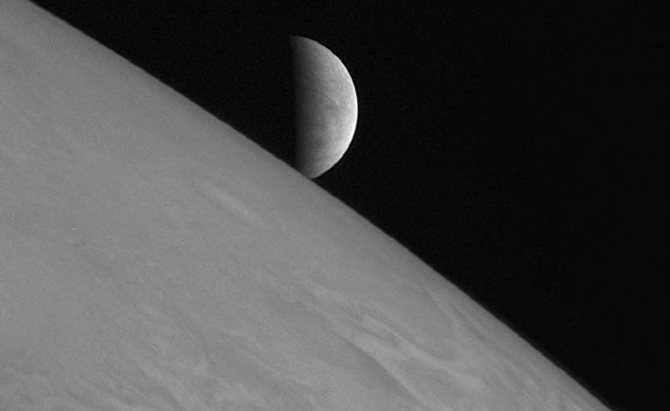
Gas giant planets are flourishing like vegetables in the celestial garden of God (PHOTO)
solareclipse.org.ru The HR 8799 planetary system comprises a youthful star and four gas giants orbiting it. The presence of carbon and water in the giants’ atmospheres has been detected by the Keck and Gemini telescopes in Hawaii.
The analysis of planets’ atmospheres using advanced analyzers has revealed the distribution of molecules and the proportion of oxygen to carbon. These findings have shed light on the formation process, indicating that the gas layers were accumulated gradually, resembling the layers of cabbage leaves around a solid core. This discovery suggests the possibility of rocky planets within the system, in addition to the gas giants, and raises the intriguing possibility of habitable conditions.
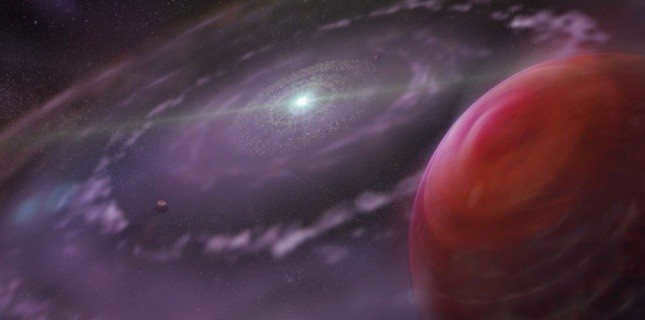
This is the perspective of the HR 8799 system as observed by the Dunlap Institute for Astronomy & Astrophysics Mediafarm
- There have been 6406 new cases of COVID-19 infection reported in Russia
- A somnologist shared tips on how to sleep during hot weather without relying on air conditioning
- A political scientist highlighted a precedent that could potentially allow Russia to take action against Ukraine for water supply to Crimea
- Here’s what we know about Naili Asker-zadeh’s biography
- Astronomers have detected a new type of repetitive space radio signals with unknown origins
- Athletes are planning a swim in the water area of Peter the Great Bay to assess its condition
- The body of a 5-year-old boy who went missing in Bashkiria has been found in the river
- A Russian professor has made a promise to eliminate the “nightmare” that the residents of Donbass in Ukraine are facing.
- Elena Malysheva claims that New York is in a state of fear due to the COVID-19 pandemic.
- Scientists have discovered new factors that contribute to the aging process.
- Looking for ways to combat morning sleepiness without relying on coffee, tea, or energy drinks?
Join our CLAN membership and receive a weekly issue of Argumenty Nedeli at a discounted rate of 70% off. You’ll also gain access to exclusive materials not found in the newspaper, a premium library of interesting books, and an archive of over 700 issues – all for free. Plus, enjoy a year of free legal advice from our experts.
- Please provide your e-mail address and select a preferred payment method to complete your yearly subscription.

Stay connected. Follow us and subscribe to our social media channels.
Discover the latest updates on Yandex News, Google News, WorldTesen, Yandex Zen, Twitter, Telegram, Vkontakte, Odnoklassniki, Facebook, and Instagram.
Origin[edit edit code]
Distinctive Features[edit edit code]
As previously mentioned, gas giants are predominantly composed of hydrogen and helium. They possess substantial masses: the solar system’s two gas giants, Jupiter and Saturn, have masses of 317 and 95 Earth masses respectively. The theoretical maximum mass would be 13 MJ, as at higher masses, thermonuclear reactions would initiate in the core, categorizing the object as a brown dwarf. The lower limit has not yet been precisely determined, but it must exist as small celestial bodies are incapable of retaining a lightweight gas like hydrogen.
Structure[edit right code].
The arrangement of the enormous planets in our solar system
Models of the internal composition of gas planets propose the existence of multiple layers. At a specific depth, the pressure within the atmospheres of gas planets reaches extreme levels, causing hydrogen to transition into a liquid state. In the event that the planet is sufficiently large, it is possible for there to be a layer of metallic hydrogen even deeper, where the flow of electric currents generates a formidable magnetic field for the planet, much like in the cases of Jupiter and Saturn. It is also believed that gas planets possess a relatively minor rocky or metallic core.
According to the measurements made by the Galileo lander, the gas planets experience a rapid increase in pressure and temperature in their upper layers. In Jupiter’s atmosphere, at a depth of 130 km, the temperature reached approximately 145 °C, while the pressure was recorded at 24 atmospheres. It is worth noting that all the gas planets in our Solar System emit a substantial amount of heat, exceeding the energy they receive from the Sun. This phenomenon is attributed to the release of gravitational energy during compression. Although there have been models proposed suggesting that fusion reactions within Jupiter could also contribute to the released heat, there is currently no observational evidence to support these models[3].
Atmosphere[edit edit code]
Powerful winds blowing at speeds of several thousand kilometers per hour characterize the atmospheres of gas planets. Saturn’s equator, for example, experiences wind speeds of 1800 km/h. These gas giants also feature permanent atmospheric formations in the form of massive vortices. One such example is the Great Red Spot on Jupiter, which has been observed for over 300 years and is several times larger than Earth. Additionally, Saturn also boasts smaller atmospheric spots.
Jupiter and Saturn hold the record for having the highest number of satellites among all the planets in our solar system. When it comes to gas planets, the ratio of the combined mass of their satellites to the mass of the planet itself is approximately 0.01% (1 in 10,000). Scientists have created models to explain this phenomenon, proposing that these satellites form from gas and dust disks that contain significant amounts of gas. These models also incorporate mechanisms to restrict the growth of satellites.
Ask Ethan #71: Why do planets have a different composition than the Sun?
The Sun is predominantly made up of hydrogen and helium, while Earth and other planets have much less of these elements. How did this disparity come about?
“The greatest advantage of youth is the impossibility of knowing what is impossible.” – Adam Brown
Every week, I receive questions from all of you, and I select the most intriguing ones to answer. However, sometimes the simplest questions are the most challenging to address. Consider the Sun and the stars, and then compare them to the planets. One might initially assume that the only difference between them is their mass – that if a planet were to become extremely massive, it would transform into a star. However, this line of thinking fails to account for a basic observation made by Greg Rogers:
“If the Sun (and all stars) are mostly composed of hydrogen and helium, why do the planets have a different distribution of matter?”
The distribution of matter in the planets differs not only from that of the stars, but it is entirely distinct.

If we examine the surface of our planet closely, we discover a wide range of elements: approximately 90 elements are present in natural deposits. We possess an abundant supply of hydrogen, however, it does not dominate, particularly in terms of mass. The atmosphere is primarily composed of nitrogen and oxygen; the oceans, which encompass the planet, consist of 11% hydrogen by mass (as each oxygen atom is 16 times heavier than hydrogen); the solid matter of both living and non-living entities, including rocks, soil, plants, and animals, contains a significant amount of hydrogen, but a much higher concentration of sodium, oxygen, silicon, aluminum, and various other elements.
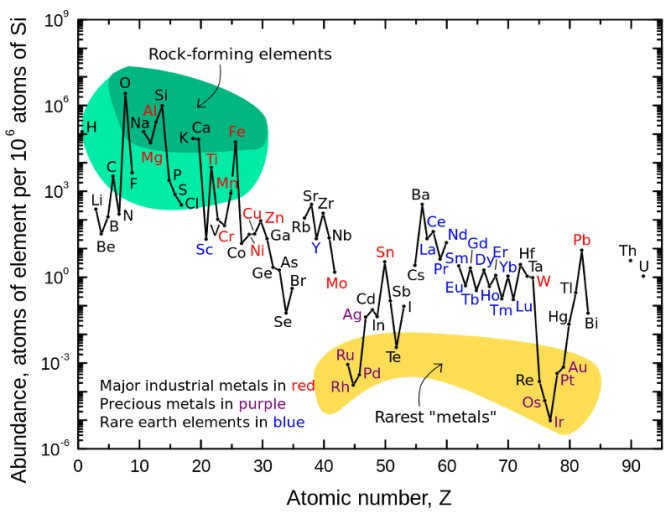
Delving deeper into the Earth, we encounter a more intricate scenario. Undoubtedly, there exists helium stored in subterranean voids, albeit it originated from the decay of superheavy elements through billions of years. A small quantity of hydrogen can also be found, but a larger portion comprises heavy elements: such as metals like iron, nickel, cobalt, and elements that surpass the stability limits on the periodic table.
We possess this knowledge due to the progressive densification of Earth’s layers as we descend into the planet. This densification is not solely a result of gravitational compression; the heaviest elements simply sink down. This fact is of utmost significance, hence I shall reiterate: during the Earth’s early stages, a diverse range of elements existed, yet the heavier ones descended while the lighter ones remained to “float” towards the surface – similar to less dense liquids floating atop denser liquids.
Objects with increasing density: ping-pong ball; lamp oil; medical alcohol; plastic bottle cap; vegetable oil; beads; water; cherry tomato; dishwashing liquid; milk; dice; maple syrup; corn kernel; corn syrup; honey; metal bolt.
Therefore, when examining the Earth’s surface, we observe the presence of the lightest elements that comprise it. The majority of the other elements found in its composition are of greater weight and density. As a result, the abundance of hydrogen and helium is relatively limited.
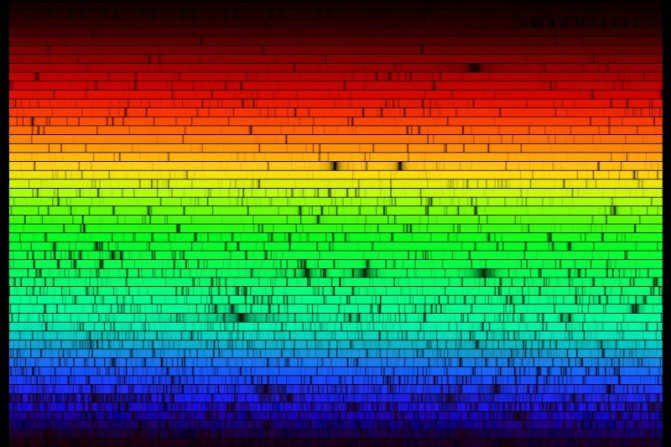
Now let’s shift our focus to the sun and the celestial bodies. Let’s examine the solar spectrum: it showcases a variety of absorption lines, which represent the entire spectrum of elements present on Earth, along with a few that are not naturally found.
One noticeable observation is the presence of two distinct sets of absorption lines, corresponding to hydrogen and helium, which are remarkably prominent. As we delved into the understanding of stellar mechanics, and how temperature, ionization, and element abundance are interconnected, we came to realize that the Sun is composed of 70% hydrogen, 28% helium, and 1-2% other elements.
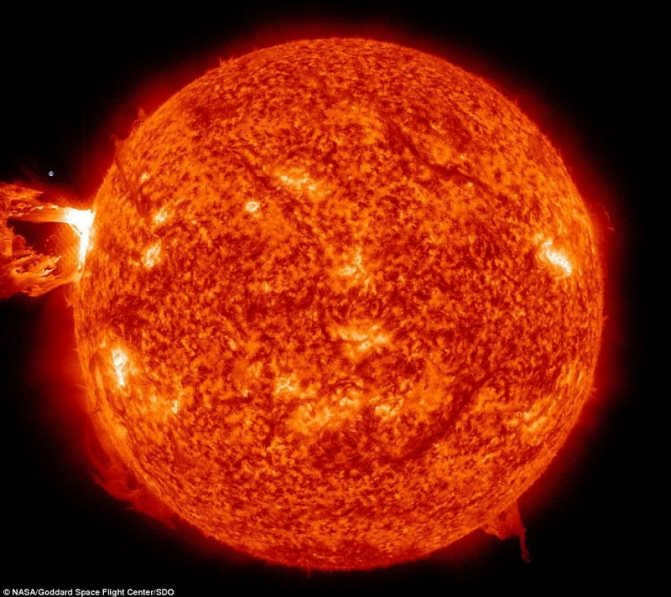
In fact, planets in our solar system are mainly composed of gases. However, the Earth is quite different, as it is made up of mostly “other elements”. But why is that the case? To find the answer, we need to go back to the birthplace of planets: the nebula where stars are formed. This nebula is primarily composed of hydrogen, with a considerable amount of helium and a small proportion of other substances. As the nebula collapses under its own gravitational force, planets like Earth are formed, with their unique compositions.
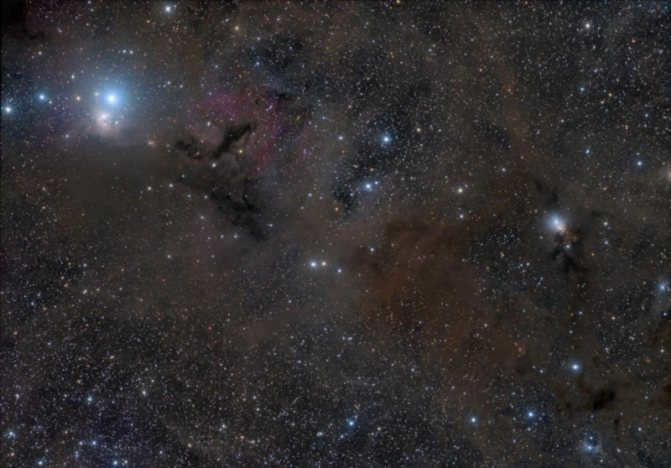
During the early stages of star formation, gravity plays a crucial role. Clusters form within the gas cloud, their density increases, and regions of high density attract more and more matter. Due to the rapid nature of gravitational collapse and the lack of efficient energy radiation methods for gas clouds, the collapse causes the inner layers of these clusters to heat up. After a certain period of time, the hydrogen within the core reaches the necessary temperature and density to trigger nuclear fusion.
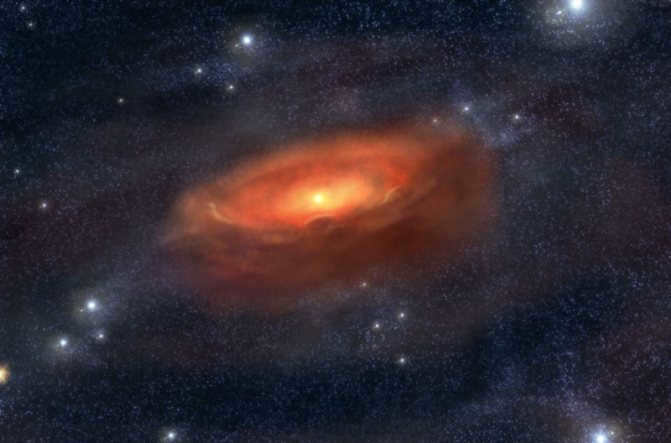
There is a great variety of colors, temperatures, and masses among newborn stars. However, the majority of them share a common characteristic – they do not form alone, but rather emerge in the presence of other objects. The most massive ones, which have a significant advantage, will eventually develop into solid planets, large gas giants, or, in rare situations, even other stars.
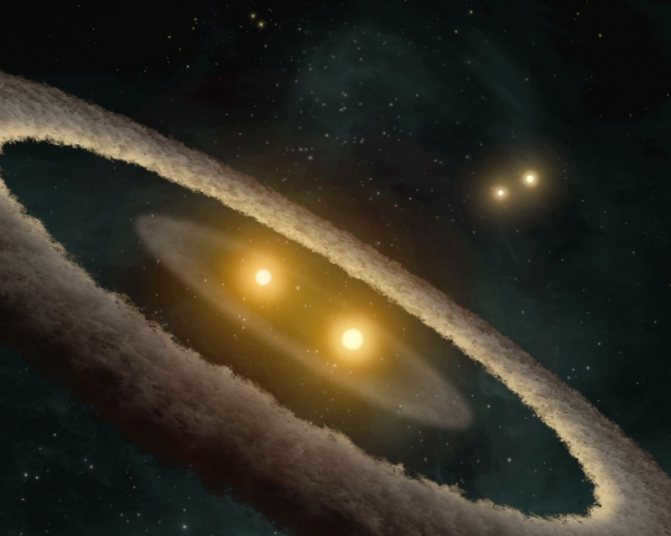
Meanwhile, the primary gases that make up giant planets also encounter the energy emitted by their parent star. This energy, consisting of the solar wind, ions, electrons, and photons, interacts with the gases as it travels through the planetary atmospheres.
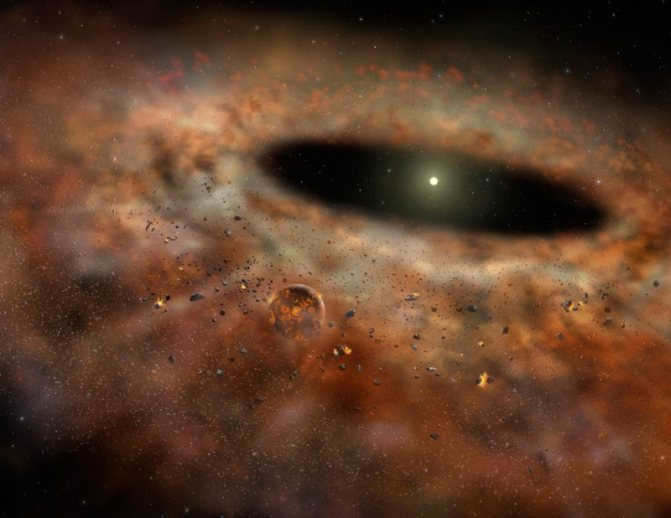
In the case of each planet or planetoid, they encounter the outermost, lightest elements, as these are the ones that are “floating” on the surface above the heavier ones, which are submerged closer to the center. Imagine delivering a powerful kick to a soccer ball, and then consider the contrast with kicking a bowling ball. Forget about the leg – just focus on the ball. The soccer ball will gain a significant amount of speed and soar through the air, whereas the bowling ball will hardly budge.
Why is that? Well, objects of different masses given the same amount of energy momentum will cause the lighter ones to move faster.
A visual representation illustrating the process of gas dispersal from planetary surfaces. When a line of gas is depicted above a planet, it indicates that the planet’s gravity is insufficient to retain the gas. This phenomenon explains why rocky planets lack hydrogen and helium atmospheres, while gas giants possess them.
On nearly all celestial bodies, this forceful expulsion is powerful enough to expel nearly all the hydrogen and helium into the vast expanse of interstellar space. The immense energy emitted by the star provides the atoms with the necessary velocity to overcome gravity, rendering them detached from the gravitational pull of their original world.
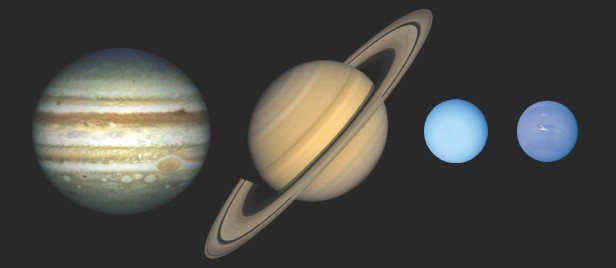
Gravity strong enough to retain helium and hydrogen is found only in gas giants, which are planets with a mass at least twice that of Earth. Furthermore, the thickness of a gas giant’s shell increases with its mass. Gas giants are believed to have a solid core made up of heavy elements, although accessing it requires passing through multiple layers predominantly composed of hydrogen.
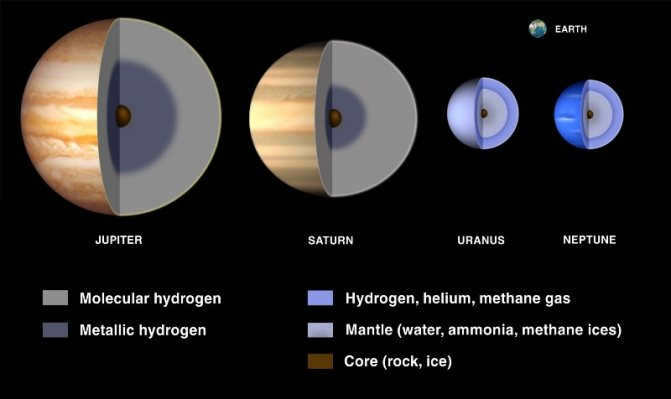
That is the reason why the elements are positioned in their current locations. I appreciate your excellent inquiry and trust that the clarification has been effectively conveyed to you and the rest of our audience. Feel free to send me any further questions or suggestions for future articles.
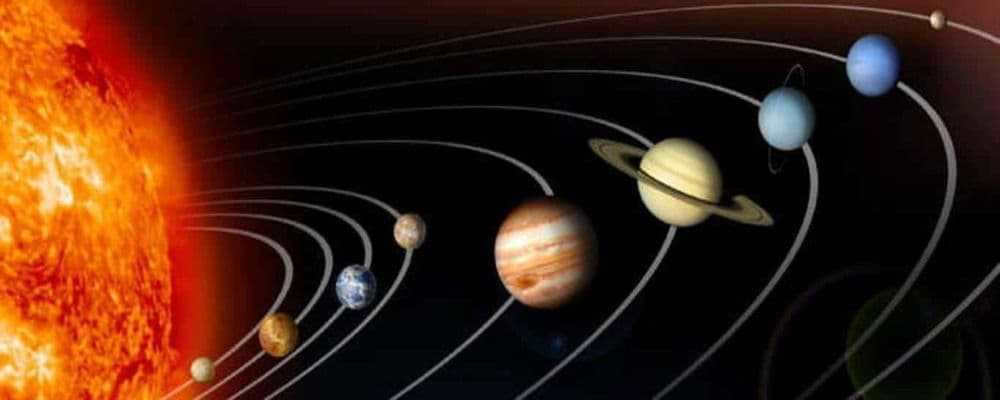
The gas giants in our solar system consist of Jupiter, Saturn, Uranus, and Neptune. These four massive planets are located in the outer region of the solar system, beyond the orbit of Mars and the asteroid belt. Jupiter and Saturn are considerably larger than Uranus and Neptune, and each pair of planets has a slightly different composition.
In our planetary system, there are only four primary planets. However, astronomers have identified numerous similar celestial bodies beyond it, thanks to the NASA Kepler space telescope. These exoplanets, as they are known, are being studied to gain insight into the formation of our solar system.
Jupiter, the biggest planet in our solar system, possesses a radius around 11 times larger than that of our Earth. NASA has confirmed the existence of 50 satellites orbiting the planet, with an additional 17 awaiting official confirmation. The composition of this massive planet primarily consists of hydrogen and helium, enveloping a condensed core of rock and ice. It is believed that the majority of Jupiter’s mass is composed of liquid metallic hydrogen, which generates an immensely powerful magnetic field. Throughout history, Jupiter has been visible to the naked eye in the night sky and was well-known to ancient civilizations. The planet’s atmosphere is predominantly composed of hydrogen, helium, ammonia, and methane.
Saturn is approximately nine times larger than Earth in terms of radius. Its most fascinating feature is the existence of expansive rings encircling the planet. The origins of these rings remain a mystery, as their formation process is still not fully understood. According to NASA, Saturn is accompanied by 53 confirmed satellites, with an additional nine awaiting official confirmation. Similar to Jupiter, the composition of Saturn primarily consists of hydrogen and helium, enveloping a compact core. This celestial body was also recognized by ancient civilizations. The atmosphere of this colossal planet bears resemblance to that of Jupiter.
Uranus possesses a radius approximately four times larger than that of Earth. It is the lone planet that exhibits a rotational axis tilted on its side, and moreover, it rotates in the opposite direction compared to the other celestial bodies within the solar system, with the exception of Venus. Scientists hypothesize that this unique rotation was the outcome of a colossal collision between Uranus and another massive entity during the solar system’s formation. NASA reports that Uranus boasts a total of 27 satellites. Its gaseous atmosphere primarily consists of hydrogen, helium, and methane. The discovery of Uranus is credited to William Herschel, who made the observation in 1781.
Neptune, similar to Uranus, possesses a radius approximately four times larger than that of Earth. Its atmospheric composition predominantly comprises hydrogen, helium, and methane. NASA confirms that Neptune is orbited by a total of 13 satellites, with the potential for one additional satellite, pending confirmation. The discovery of Neptune was a collaborative effort by multiple astronomers, all of whom made the observation in 1846.
Super-Earths
Researchers have discovered numerous “super-Earths” in other star systems. These planets are larger than Earth but smaller than Neptune. Interestingly, our solar system does not have any known super-Earths. However, there is a hypothesis among some scientists that a “Planet Nine” may exist in the outer reaches of our solar system. Scientists are currently investigating this class of planets to determine if they resemble small gas giants or more substantial, Earth-like bodies.
How do gas giants form?
Scientists speculate that gas giants were initially created as rocky and icy planets, similar to Earth. However, their larger size allowed them to capture hydrogen and helium from the gas cloud that formed the Sun, particularly in the cases of Jupiter and Saturn. This occurred prior to the planets absorbing the majority of the gas.
On the other hand, Uranus and Neptune were smaller in size and had more distant orbits. Consequently, they were unable to efficiently gather hydrogen and helium like Jupiter and Saturn did. This likely accounts for their smaller size compared to their counterparts. As a result, their atmospheres contain a higher proportion of heavier elements, such as methane and ammonia, in relation to hydrogen and helium. This is due to their reduced size.
Giant planets possess numerous satellites. Numerous are created simultaneously with their parent planets. This is verified by the fact that the satellites orbit in the same direction as their parent planets. As an illustration, Jupiter’s massive satellites Io, Europa, Ganymede, and Callisto rotate in this manner. Nevertheless, there are exceptions.
Triton, one of Neptune’s satellites, revolves around the planet in the opposite direction to Neptune’s rotation. This implies that Triton was ensnared by Neptune’s potentially denser atmosphere as it passed by. There exist numerous other minuscule satellites in the solar system that orbit at a considerable distance from the equator of their planets. This signifies that they were likewise captured by a powerful gravitational force.
Latest Research
Exploring Jupiter
In 2016, NASA’s Juno spacecraft successfully reached Jupiter and has since made significant breakthroughs in our understanding of the planet. One of its primary focuses has been the study of Jupiter’s rings, a task that has required extensive effort due to their relatively thin nature compared to Saturn’s rings. Through its exploration, the AMS Juno mission has revealed that the particles responsible for Jupiter’s mesmerizing auroras differ from those found on Earth. This revelation has shed light on various mysteries surrounding Jupiter’s atmosphere, including the presence of high-altitude clouds that produce snow. In addition to Juno, scientists are employing the Hubble Space Telescope to conduct a detailed investigation of Jupiter’s iconic Great Red Spot. By closely observing its dynamics and the fluctuating intensity of its colors, researchers hope to gain further insights into this enigmatic phenomenon.
Saturn
The Saturn system was extensively studied by the Cassini spacecraft for over 13 years, until 2017. The scientific community is still in the process of analyzing and processing the data collected by Cassini. During its final months, the mission focused on examining Saturn’s gravitational and magnetic fields, as well as observing the planet’s rings from new perspectives. Additionally, the spacecraft intentionally descended into Saturn’s atmosphere, providing valuable insights.
Uranus
Storms on Uranus attract the attention of both professional scientists and amateur astronomers. They observe the development and transformation of storms over time. Scientists are also eager to investigate the composition of Uranus’ rings and gather information about its atmosphere. Additionally, Uranus may host multiple Trojan asteroids, which are asteroids that share the same orbit as the planet. The initial discovery of one such asteroid occurred in 2013.
Observing the storm on Neptune is also a widely favored activity. And in the year 2018, this endeavor once again yielded positive results. The Hubble Space Telescope’s findings revealed that the storm is currently undergoing a gradual decrease. Scientists observed that the storm’s dissipation is occurring in a manner that deviates from initial predictions. This indicates that further refinement is needed in our comprehension of Neptune’s atmosphere.
Exoplanets
Many ground-based telescopes are currently engaged in the search for exoplanets. Additionally, there are several ongoing space missions dedicated to conducting surveys and studies on exoplanets, such as Kepler, Hubble, and Spitzer.
Furthermore, there are future missions planned to be launched with the specific goal of discovering more exoplanets.
The planets within our own solar system did not all form simultaneously. This fascinating process occurred approximately 4.6 billion years ago. These planets were created from the remnants of the Sun’s formation, which involved a disk composed of hydrogen, helium, as well as rock, iron, and ice particles. Through the gravitational forces at play, these particles eventually coalesced into four solid planets. Additionally, further away from the disk, gas giants were formed from gas and dust. This is precisely what we will be discussing – the distinctions between these gas giants and the unique characteristics of each.
Jupiter, which is 1000 times larger than Earth, is the largest planet in the solar system. Composed mostly of hydrogen and helium, Jupiter’s hydrogen is a type of fuel that powers stars. In fact, if Jupiter were 80 times bigger, it would have the mass necessary to become a star itself. Beyond its impressive size, Jupiter also possesses an incredibly strong gravitational pull. This pull not only attracts 63 satellites, but it also diverts many asteroids that would otherwise be on a collision course with Earth.
While other gas giants have rings, it is Saturn that is most famous for its stunning ring system. These rings, however, cannot be seen with the naked eye. Additionally, Saturn is notable for its moon called Titan, which has an atmosphere and the potential for hosting life. In an interesting contrast to its size, Saturn is actually the lightest planet in the solar system. This means that if you were to place Saturn in the ocean, it would not sink.
It took a long time for anyone to locate it or identify it as a planet. John Flemsteed was the first person to discover Uranus, which occurred in 1690. However, the astronomer mistakenly believed the planet to be a star. In 1781, William Herschel observed Uranus through a telescope and mistakenly believed it to be a comet. After examining the observations of other astronomers, Herschel ultimately determined that Uranus was indeed a planet. Uranus contains a greater amount of ice than gas. It orbits the Sun while tilted on its side.
This particular planet was uncovered by German astronomer Johann Gottfried Galle in 1846. A year on Neptune is equivalent to 164 Earth years. The planet experiences incredibly powerful winds, with speeds reaching up to 2,000 kilometers per hour. This is equivalent to the velocity of the fastest jet airplane.
Unique Report #2
In our vast Universe, there exist numerous colossal celestial bodies known as “giant planets” that possess similar physical attributes. These magnificent entities are also referred to as outer planets due to their positioning beyond the asteroid belt, which lies between Jupiter and Mars. Within our solar system, there are a total of four giant planets: Jupiter, Saturn, Uranus, and Neptune.
These extraordinary planets boast immense sizes and masses, surpassing those of other celestial bodies by thousands of times. For instance, Neptune possesses a staggering mass equivalent to 17 times that of Earth, while Jupiter towers above them all with a mass of 318 Earths.
Due to the significant distance from the central star of the Solar System, the massive planets always experience low temperatures, regardless of the time of year. One intriguing characteristic of these planets is the unique variation of seasons or the complete lack thereof, which is dependent on the angle of inclination of the planet’s axis to the orbital plane: the closer the angle is to 90 degrees, the less variation in seasons, and with a perpendicular position, the change is completely absent.
A multitude of satellites orbit around each of the giant planets: Jupiter has 79, Saturn – 62, Uranus – 27, Neptune – 17. Additionally, all of these planets possess rings.
Giants possess a fascinating characteristic: they are all composed of gas. Additionally, they have dense atmospheres that make it difficult to study the substance beneath the gas cloud. Furthermore, outer planets have a lower average density, similar to that of the Sun. In terms of chemical composition, giants differ significantly from planets with a lithosphere.
Another notable feature of giants is their strong magnetic field. Scientists attribute this to the rapid rotation of matter in the equatorial regions, which generates current. As a result, each giant has radiation belts consisting of charged particles that extend millions of kilometers around the planet.
Furthermore, alongside the four planets, there is speculation among scientists about the presence of other colossal planets: the alleged ninth planet, Tyuhe, and the enigmatic “planets X”. Nevertheless, the majority of their conjectures lack scientific basis and credibility.
Alternative #3
Giant planets are celestial bodies in the solar system that earned their name due to their tremendous size. This group includes four planets: Saturn, Jupiter, Uranus, and Neptune. Despite their individual characteristics, these planets share common features that distinguish them from other celestial bodies. The asteroid belt serves as a boundary, separating the giant planets from the regular planets located further away. The giant planets are primarily composed of various gases, which contribute to their low density. Additionally, they are characterized by their substantial size, rapid rotation around their axes, and the presence of numerous satellites (ranging from 14 to 72) and rings. Notably, Uranus and Neptune possess a significant amount of high-temperature ice in their cores. Moreover, the giant planets play a crucial role in safeguarding our planet and the three other terrestrial planets from potential asteroid collisions.
Saturn is the planet that comes after Jupiter. It is well-known for its rings, which are composed of various sizes of ice and dust particles. The rings are much wider than they are thick, so they cannot be seen from the outside. Among all the planets, Saturn has the lowest density, even lower than that of water. Additionally, Saturn has a total of 62 moons. One of its moons, Titan, is the second largest moon in the entire solar system and is even bigger than Mercury. Titan is unique in that it has a dense atmosphere. It takes Saturn approximately 29 and a half years to complete one orbit around the Sun. Lastly, Saturn can be seen with the naked eye from Earth.
Uranus is the third planet in the Solar System and is considered a gas giant. Its atmosphere is composed of various gases and also features vortices. Inside Uranus, there is a combination of ice and rocks. One of the distinct characteristics of Uranus is its rotational axis, which is aligned with its orbital plane around the Sun. As a result, Uranus experiences prolonged periods of illumination at either the North Pole or the South Pole, lasting for about 42 years each. A day on Uranus lasts approximately seventeen hours. Unlike most planets, Uranus does not have a solid surface due to its atmosphere transitioning from gas to liquid. Uranus holds the record for the lowest temperatures in the Solar System, with temperatures dropping as low as -200°C. Interestingly, even Neptune, which is located further away from the Sun, is relatively warmer. The wind speeds on Uranus can exceed 200 meters per second. Although Uranus is larger than Earth, it has less gravitational pull. Additionally, Uranus is known to have 27 satellites.
Neptune is positioned at the outer limits of our solar system and holds the title of being the farthest planet from the Sun. Its presence cannot be detected without the aid of a telescope, as it remains invisible to the naked eye. Interestingly, Neptune was not initially discovered through visual observation, but rather through intricate mathematical calculations. In terms of size, Neptune is smaller than Uranus, though it surpasses it in terms of mass and density. This colossal planet emits a considerable amount of internal heat. Furthermore, the winds on Neptune blow at supersonic speeds, contrary to the planet’s rotation around its axis. These powerful gusts originate from the planet’s internal energy. At present, there have been 14 satellites identified orbiting Neptune.
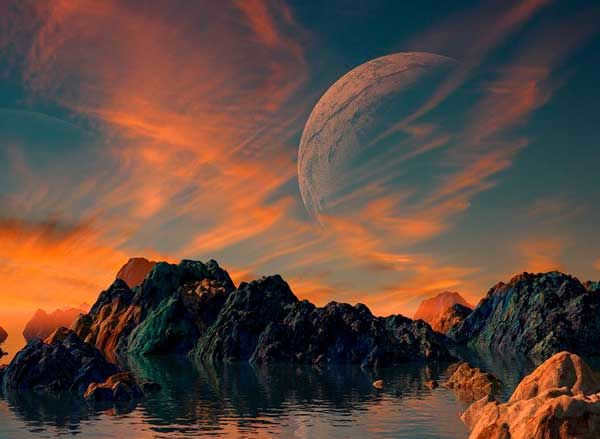
Hot topics
- The lemon butterfly When spring arrives, numerous creatures awaken from hibernation. The lemonberry butterfly is one of them. Similar to other insects, the lemon moth also emerges during the thaw, but it does so much earlier
- Woodworking Wood is a natural material that has value in agriculture, paper production, furniture making, construction, and various other industries. It is an organic substance, signifying that
- Italy Italy is a Southern European country situated in the Mediterranean region. Over 60 million individuals reside in this nation. They are known as Italians. The Italian language is spoken by the native population, and many also speak Slovenian,





